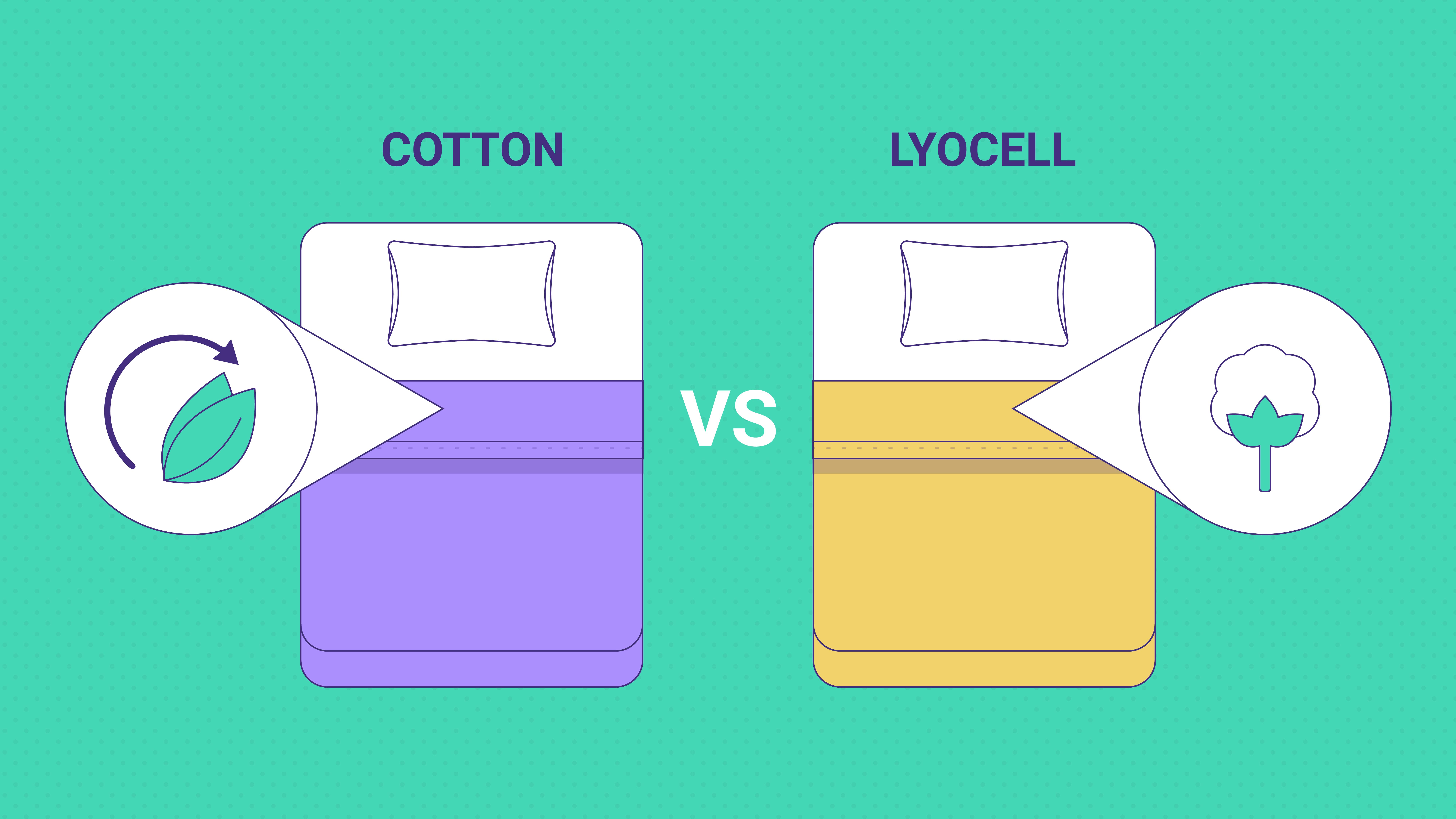
Lyocell vs. Cotton Sheets: Which is Best?

- The decision between lyocell and cotton sheets involves considering factors such as fabric origin, environmental impact, cost, durability, feel, maintenance, and temperature regulation.
- Lyocell, especially TENCEL™, stands out for its sustainable production using eucalyptus wood in a closed-loop process. It requires less water, fertilizer, and pesticides compared to cotton, making it an eco-friendly choice.
- Cotton emerges as a cost-effective option with its affordability, easy processing from plant to fabric, and low maintenance. While it may lack some of lyocell’s environmental benefits, cotton offers a crisp feel that softens over time.
With all the different fabrics on the market today, it’s tough to decide what are the best sheets. Should you get polyester? Cotton? Rayon? Wool? Nylon? Lyocell? Or something else? It can get pretty confusing pretty fast.
We’re not going to talk about every possible sheet fabric in this post. Instead, we’ll narrow it down to two different plant-based materials—lyocell and cotton—and we’ll go over the differences between the two, their advantages and drawbacks, and which one might be best for you.
Lyocell Fabric
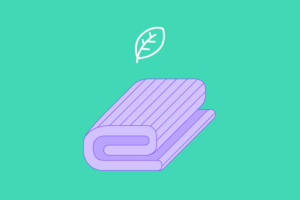 Lyocell is a type of rayon made from cellulose fiber produced by dissolving wood pulp in a solvent to create a clear liquid. This liquid is then forced through tiny holes to make strands that can be woven into fabric.
Lyocell is a type of rayon made from cellulose fiber produced by dissolving wood pulp in a solvent to create a clear liquid. This liquid is then forced through tiny holes to make strands that can be woven into fabric.
This fabric is an improvement on viscose and can be turned into anything from sustainable denim to ethical towels to eco-friendly dress shirts and underwear.
The history of lyocell is a lot shorter than the history of cotton. While cotton clothing has been around for up to 7000 years, lyocell was invented in the early 1970s by the American Enka company to improve on rayon. It quickly gained popularity as an alternative to both fully synthetic fabrics and animal-based fabrics like silk.
TENCEL™
If you spend any time looking for lyocell sheets, you’re likely to run across TENCEL™. TENCEL™ is a brand of lyocell first developed by Courtaulds Fibres in the UK. TENCEL™ is made of sustainably sourced eucalyptus wood and spun into fibers using a closed-loop process, meaning that the chemicals used to create the threads are reused and not dumped.
For an in-depth comparison of TENCEL™ and cotton, see our guide Tencel vs. Cotton Sheets: What’s the Difference?
Lyocell Materials
Most lyocell is made of eucalyptus wood, though other trees such as oak and birch work, too. There’s also bamboo lyocell, where the pulp of this hard, fast-growing grass is used to spin fibers that are woven into bamboo sheets.
One difference between TENCEL™ and other lyocell fabrics is that other lyocell may or may not be sourced from sustainable forests, so you may have to do some research before purchasing.
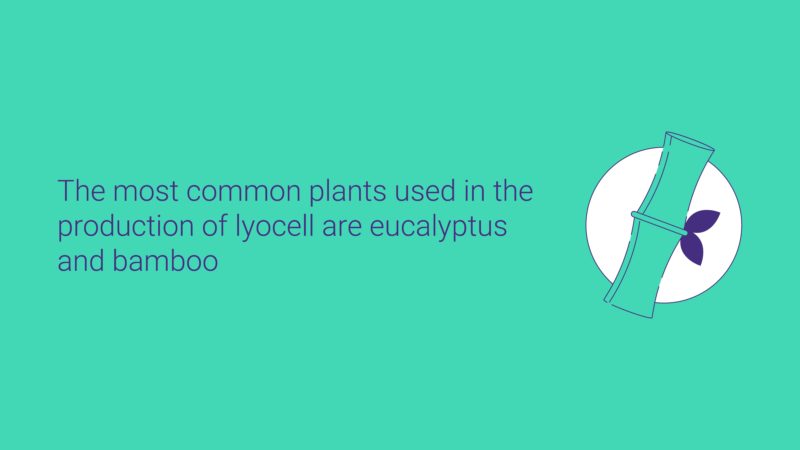
Cotton Fabric
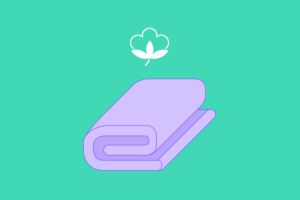 Cotton is one of the oldest and most widely used fabrics globally, and with good reason. The plant produces fibrous seed pods that are basically already made of threads. The threads form a tight ball around the seeds, protecting them while developing and eventually dispersing them to propagate the plant.
Cotton is one of the oldest and most widely used fabrics globally, and with good reason. The plant produces fibrous seed pods that are basically already made of threads. The threads form a tight ball around the seeds, protecting them while developing and eventually dispersing them to propagate the plant.
This reproductive cycle makes cotton one of the easiest plants to process for fabric. Virtually all you have to do is pull the seeds out, wash the fibers, detangle them, and they’re ready to be spun into threads. Not only is this why cotton has been used for clothing since ancient times, but it’s also why it’s possible to get organic cotton sheets with few to no processing additives.
Cotton Types
There are endless varieties of cotton, but they can be classified into two categories based on the length of their fibers.
Long-Staple Cotton
This more expensive, better quality cotton is more durable and more luxurious than its shorter staple counterpart. Long-staple and extra-long-staple cotton varieties include Egyptian cotton and Pima cotton. For examples of some our favorite sheets with long-staple cotton, see our Best Egyptian Cotton Sheets: Reviews and Buyer’s Guide.
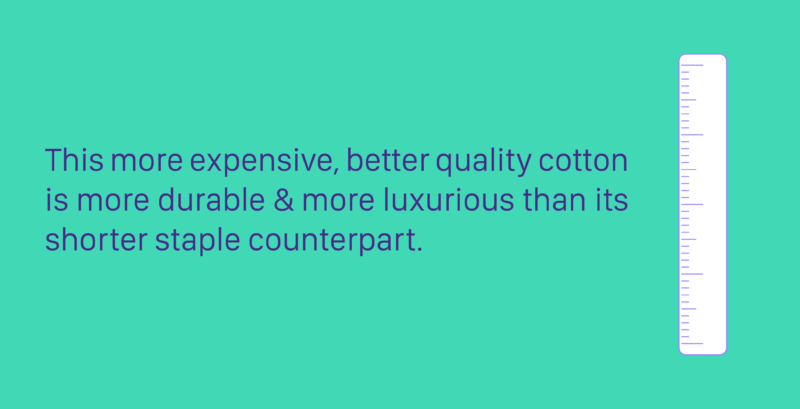
Short-Staple Cotton
This cotton type is easier and faster to grow, process, and weave than its long-staple counterpart, meaning it’s lower cost but also lower quality. Short-staple cotton is more prone to pilling, wrinkles, and fraying, but it’s a lot more budget-friendly and easier to find than long-staple cotton.
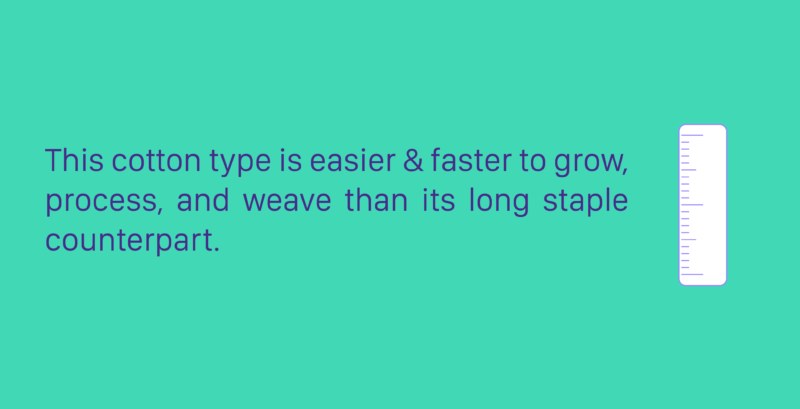
Lyocell vs. Cotton—How Do They Stack Up?
Lyocell and cotton are very different fabrics and therefore have very different advantages and drawbacks.
Cost
 When it comes to cost, cotton is the clear winner. Even the most expensive Egyptian cotton sheets will usually cost less than lyocell. The environmentally friendly production of lyocell doesn’t come cheap. That means the cost of a queen size lyocell sheet set will be anywhere from $100 to $300. Meanwhile, you can get some of the best cotton sheets for as little as $50.
When it comes to cost, cotton is the clear winner. Even the most expensive Egyptian cotton sheets will usually cost less than lyocell. The environmentally friendly production of lyocell doesn’t come cheap. That means the cost of a queen size lyocell sheet set will be anywhere from $100 to $300. Meanwhile, you can get some of the best cotton sheets for as little as $50.
Durability
This category is a toss-up. Cotton gets softer over time, increasing its durability, and tightly woven long fiber cotton will also last through years of washing and use. However, all cotton, even long-staple cotton, is vulnerable to pilling.
Meanwhile, properly maintained lyocell will resist pilling much better than even the best cotton fabrics, but it requires careful handling and will rip or wear out fast if not cared for correctly.
Feel
This category is also a toss up because lyocell feels soft and smooth from day one. Cotton, on the other hand, feels much crisper than lyocell when you first purchase it. Cotton needs several washes before it starts feeling soft.
Maintenance
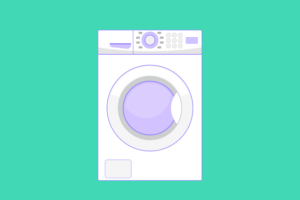 Cotton takes the prize here. You can toss most cotton sheets in any old washing machine in cold water and tumble dry them on low, and you probably won’t have to worry about much more than a little shrinkage. See our guide on washing sheets for an idea of a simple care routine.
Cotton takes the prize here. You can toss most cotton sheets in any old washing machine in cold water and tumble dry them on low, and you probably won’t have to worry about much more than a little shrinkage. See our guide on washing sheets for an idea of a simple care routine.
Lyocell is a different story. The chemical composition of lyocell makes it much more delicate than cotton. Almost all lyocell fabrics will need to be hand washed and line dried. Some may even need to be taken to the dry cleaner. Some lyocell fabrics might be able to go in the wash on the delicate cycle, but this is more the exception than the rule.
As a reminder, it’s recommended to change and wash your sheets every week to keep dust mites from accumulating. So the time you spend caring for your sheets can really add up in the long run.
Sustainability
Lyocell is the clear winner here. Cotton needs a ton of irrigation, a ton of fertilizer, and a ton of pesticides. It’s also not great for land use because it ruins soil and often requires field rotation.
Lyocell, meanwhile, is mostly made of sustainable crops. The most common plants used in the production of lyocell are eucalyptus and bamboo. Both of these crops don’t use a lot of water, fertilizer, or pesticides. What’s more, both bamboo and eucalyptus trees can regenerate from their roots. That means not only do they not need to be reseeded after harvest, but fields also rarely need to be rotated, which cuts down on land use.
Temperature
 Both cotton and lyocell, whether eucalyptus or bamboo lyocell, are great at regulating temperature. These highly breathable fabrics can both help divert body heat away from you. The one thing that lyocell can do that cotton can’t is wick away moisture. Lyocell encourages evaporation, meaning it can help wick the sweat away from you in a way that cotton can’t.
Both cotton and lyocell, whether eucalyptus or bamboo lyocell, are great at regulating temperature. These highly breathable fabrics can both help divert body heat away from you. The one thing that lyocell can do that cotton can’t is wick away moisture. Lyocell encourages evaporation, meaning it can help wick the sweat away from you in a way that cotton can’t.
See also our guides to cooling bedding, which feature cotton, TENCEL™, bamboo, along with other natural cooling materials like linen and wool.
- Best Cooling Sheets
- Best Cooling Pillows
- Best Blankets for Summer
- Best Cooling Mattress Topper
- Best Cooling Weighted Blankets
FAQs
Is Egyptian cotton really the best cotton?
The short answer is sort of—Egyptian cotton is the same species as Pima cotton and Sea Island cotton (Gossypium barbadense). Egyptian cotton is supposed to come from the Nile River Valley, where it originated, whereas Pima/Sea Island cotton comes primarily from the United States.
The Nile River Valley has been famous for thousands of years as the premier place for cotton to thrive. So Gossypium barbadense that comes from Egypt may be better than any other cotton. The problem arises with verification.
Because Pima and Egyptian cotton are the same species, most of the long-staple cotton labeled Egyptian cotton may not have been grown in Egypt. On the flip side, short-staple cotton fabrics that are not Gossypium barbadense but are grown in Egypt can be labeled Egyptian cotton. So Gossypium barbadense grown in the Nile River Valley might be the best, but it’s tough to know for certain that’s what you’re getting with products labeled Egyptian cotton.
How do you wash lyocell fabric?
The best answer to this question is to check the care label for washing instructions. However, most lyocell sheets follow the same general set of instructions. Hand wash in a tub of cold water with a gentle detergent. Soak for around 30 minutes, gently agitate with your hands, rinse, and line dry. Avoid the washing machine unless your care label says the gentle cycle is okay.
Is lyocell a synthetic or a natural fiber?
This is a tricky question. Lyocell starts out as wood pulp, so it’s a plant-based fiber. However, it goes through a lot of processing in which manufacturers use chemicals like N-Methylmorpholine N-Oxide (NMMO) and amine oxide, which can make lyocell fiber more synthetic in some people’s eyes. The most straightforward answer to this question is that lyocell is a semi-synthetic fiber.
Will lyocell or cotton hold color better?
Lyocell has better moisture absorption than cotton, and that translates into a material that is not only very accepting of new dyes but also holds onto its color through years of use and many washes. Cotton is not as talented in this area. It dyes fairly easily, but it does not hold its color as well as lyocell. Sometimes it can fade in as little as a few washes.
Is TENCEL™ the same thing as lyocell?
Technically, TENCEL™ is a brand name of lyocell made only from sustainable eucalyptus trees. Non-brand lyocell is still a textile made from wood pulp and has a similar manufacturing process, but it may not be made of eucalyptus, and it may not be made of crops that are as sustainable as those that makeup TENCEL™.
Bottom Line
Both lyocell and cotton make great choices for sheet fabric in their own unique ways. Cotton is cheaper and lower maintenance, while lyocell is more sustainable and better at wicking away moisture. So it really comes down to your preference and what you prioritize.
If you want an eco-friendly fabric and don’t mind a little extra maintenance, lyocell is probably up your alley. But if you want a low-maintenance, budget-friendly sheet, cotton is your best friend. Keep your preferences in mind as you shop for the best bed sheets.
